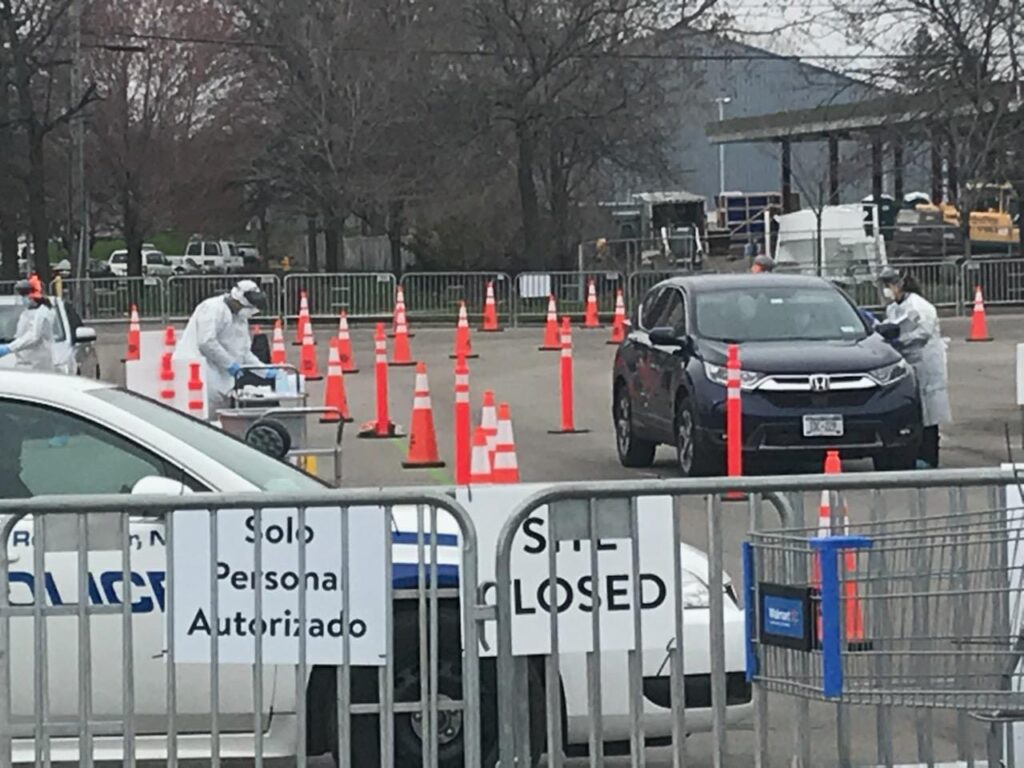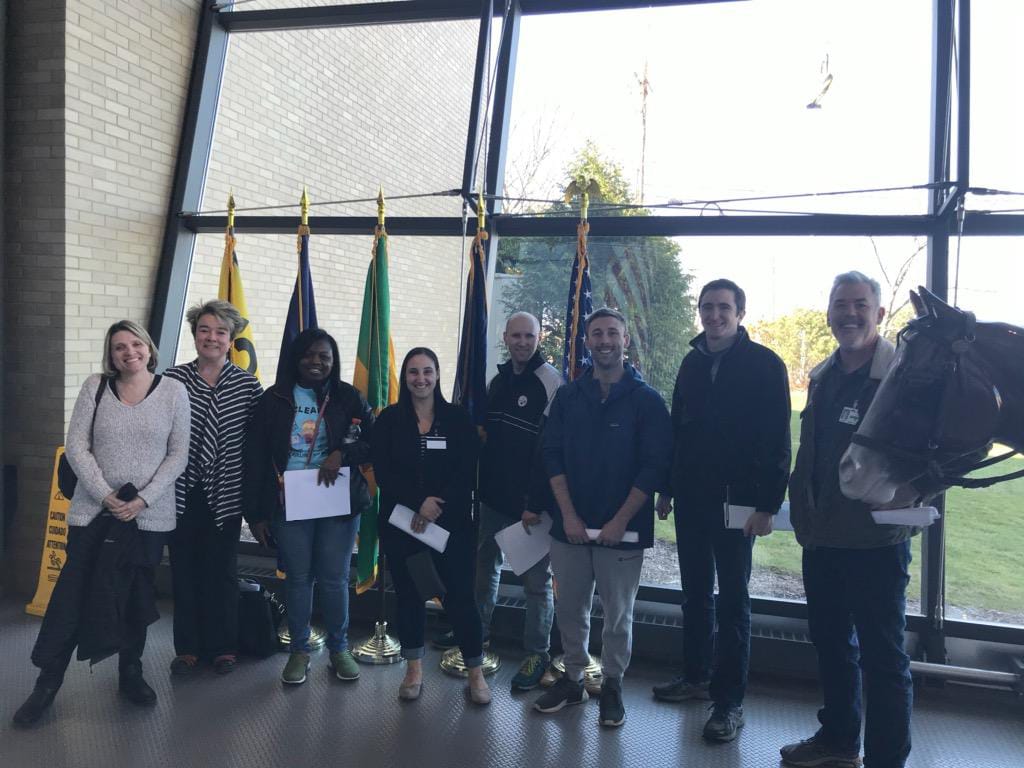UNITED STATES. Rochester, New York. At 11:30 pm one night in mid-March, Dr. Beth Heavey, epidemiologist, professor of nursing, and front-line healthcare worker in the surging COVID-19 pandemic, stood in her bathroom speaking softly into her cell phone so as not to wake her kids. Calling from the Bronx was a lead nurse and a former student, in tears. “We are turning people away,” she said. “We are turning people away, and they are going to die. We are being given ‘no resuscitation’ orders because we don’t have the respirators to save them. We don’t have enough staff. We don’t have the equipment to protect ourselves. I have to decide who lives and who dies.”
This was only one of several calls she received from former students, trying to manage a crisis that challenged the very heart of why they went into healthcare.
Heavey served on the COVID-19 response team for Monroe County (Rochester, NY), and she and her family nurse practitioner students provided in-home COVID-19 testing, follow-up, and contact tracing.

“The outcomes we are seeing currently in the United States are a direct result of inconsistent and at times non-existant public policy,” she said in an interview with Transcontinental Times. “We are still experiencing more then 40,000 new cases per day many of which could have been prevented. Half the number of deaths (including more than 1,700 healthcare workers) could have been prevented if the administration had been open with the public from the beginning, if the right equipment had been issued to healthcare providers, and if 85% of the population wore masks.” Withholding information and providing misinformation not only led to increased deaths, but it puts the public trust in a vaccine and thus the efficacy of further public health measures, at great risk.
Vaccines: The promise and the pitfalls
Currently, there are approximately ten vaccine trials that have entered Phase 3 which includes administering the vaccine to thousands of individuals most likely to be exposed (such as healthcare workers) and following them for an extended period of time. It’s during this phase that unintended side effects can be observed. Researchers look for a reasonable success in preventing infection or at least preventing moderate to severe cases of COVID before moving forward with FDA approval and mass production/administration to whole populations.
While is it encouraging that these trials have entered into Phase 3, Heavey cautions, “The earliest any vaccine will be available is likely early December. Most unusual but serious reactions to vaccines occur in the several months after they are administered.”
She continued, “The FDA has already stated they want to see at least two months of follow up data before even considering an emergency approval of a vaccine. It is also not uncommon for Phase 3 trials to start and stop periodically. If serious illness occurs, the trial has to be temporarily stopped while the conditions are investigated to determine if the illness is related to the vaccine. We just saw this happen with one of the trials. This is good science and following appropriate safety measures.” While December may be the earliest a vaccine is approved, Heavey warns about several remaining challenges ahead.
First, we do not know how long the immune response to the infection or the vaccine would last. “We now have documented cases of reinfection which is very concerning.” Also, the current vaccines in Phase 3 all require cold storage. “Some of these mRNA vaccines must be kept in –80-94F temperatures and can only withstand less than 24 hours in normal refrigeration,” she said, “How are we going to store the amount of vaccine needed for the entire population of the United States?”
Additionally, “Many of the vaccines in clinical trials require a second dose, given about a month later and may eventually require a follow up booster as well.” This requires an extended time frame, multiple visits and accurate record keeping. Adding to the complexity is the possibility of several different vaccines being approved, each with its own follow up require.
Another serious consideration is minority participation in the trials and the willingness of minorities to receive a vaccine once one does become available. This is an especially daunting challenge as minority populations are the most severely impacted by COVID-19. Heavey states “It is essential to know an approved vaccine is safe for historically marginalized populations, which have been disproportionately impacted by this disease.” Finally, and perhaps one of the greatest obstacles is misinformation and lack of trust.
“It’s important to understand that misinformation is one of the biggest enemies of public health,” Heavey said, which all the major stakeholders in the scientific and research communities know very well. “Nine of the major vaccine producers (Abbott Labs, Eli Lily, etc) have signed a safety pledge that guarantees no vaccine will be released until all safety guidelines have been met.” This is one way to address public concerns that a poorly studied vaccine would be approved for political reasons. It also ostensibly relieves the burden of competition among producers and ensures that the product is both safe and effective.
Herd immunity and population-wide acceptance
Vaccine administration and acceptance throughout the population is critical. Only once our population reaches herd immunity through vaccination, will the virus truly be under control.
Herd immunity varies per virus, but generally 80% of a population must be immune to a specific virus to protect the whole society. Once 80% of the population is immune, the presence of antibodies within the population stops the chain of infection, preventing further spread even if a case appears. This 80% threshold is key to protect the remaining 20% of the population, many of whom cannot receive the vaccine due to immunocompromised systems, pre-existing conditions, etc.. 80% of citizens receiving the vaccine helps protect the whole population. According to Heavey, “In order to achieve herd immunity for COVID-19, studies suggest we would need a vaccine that is about 70% effective and 80-85% of the population would need to have it.”
Trust in the vaccines (there will likely be more than one option) has been diminished with Trump’s insistence that a vaccine would be ready prior to the 3 November presidential election, a promise that vaccine researchers eschew. However, this trust is essential, especially among minority populations who are at the greatest risk of viral contraction and enduring the worst outcomes. “We have a terrible history of misinforming historically marginalized populations when it comes to health procedures and treatments. The only way to overcome that is full inclusion and complete transparency about the process and the data that comes from it. If the public is consistently provided conflicting and inaccurate information, vaccine hesitancy will compromise our success,” Heavey stated.
Heavey also warns that once a vaccine is released and begins to be administered, there is risk of a viral resurgence. “After people receive the vaccine, many may think it’s okay to stop our current safety precautions.” She provided an example to illustrate. “When we prescribe birth control pills, healthcare professionals know there is a subsequent increased risk of sexually transmitted diseases (STDs) because people stop using condoms.”
This is important because “the outcome measured in many of these vaccine trials is prevention of moderate to severe disease, not necessarily the prevention of infection. It is entirely possible that a vaccinated individual could still be able to become infected with the virus and potentially spread it under the right circumstances. Mask wearing will still be necessary to prevent viral spread until herd immunity is reached. Currently, we don’t have modeling for COVID-19 to indicate how long that will be.”
Public health messaging will be critical at this time to provide the public with clear and specific data as evidence to support the public policy decisions.
Honest, direct communication critical for coronavirus mitigation
New York State saw the worst COVID-19 cases in the world. Many attribute the swift curbing of infection spread to the decisive actions taken by the state’s governor, Andrew Cuomo, and for his daily press briefings that reached an international audience. His daily message was fact-based and gave clear guidance for the public on everything from restaurants opening to the use of public transportation. This kind of direct, apolitical information is our best hope of mitigating what is expected to be a resurgence in the United States as the majority of the country braces for cold temperatures that drive people indoors where contagion is more likely.
“We have to tell people the truth, even if the truth is not what we would like it to be. Politics has no place in public health. We must take care of one another. We must shift from an individual way of thinking toward acting in ways that are best for all of us. People want the economy to recover of course, but the economy can’t recover until the people driving the economy recover,” Heavey concluded.
Recovery means each one of us feeling safe at our neighborhood grocery store, dining in our favorite local restaurant, and attending school. We can’t return to normal in the long run unless and until we are willing to protect ourselves and our neighbors in the short run.



